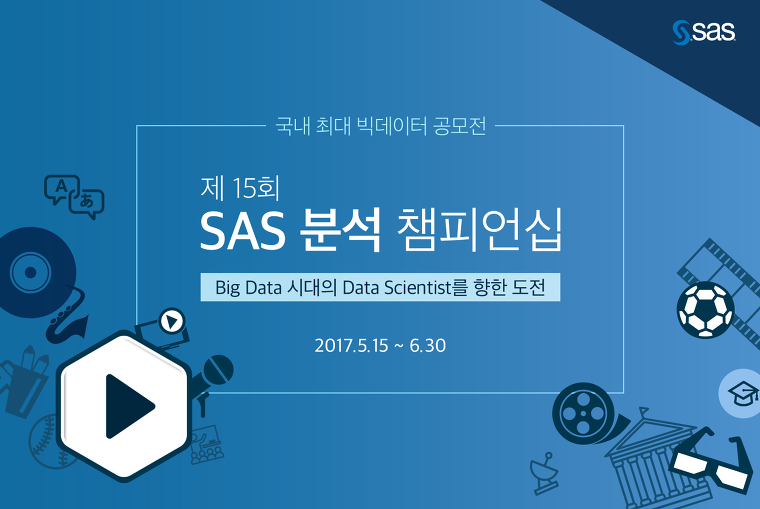
빅데이터 시대의 데이터 사이언티스트를 향한 도전! SAS코리아가 ‘제 15회 SAS 분석 챔피언십’을 개최합니다. SAS 분석 챔피언십은 차세대 데이터 사이언티스트를 양성하고 그 저변을 확대하기 위해 기획된 공모전입니다. 지난 2002년 제 1회를 시작으로 국내 가장 오랜 전통과 전문성을 자랑하는 빅데이터 공모전으로 자리잡았습니다. LG유플러스의 후원으로 진행되는 올해 SAS 분석 챔피언십의 분석 과제는 ‘나도 몰랐던 나의 취향을

빅데이터 시대의 데이터 사이언티스트를 향한 도전! SAS코리아가 ‘제 15회 SAS 분석 챔피언십’을 개최합니다. SAS 분석 챔피언십은 차세대 데이터 사이언티스트를 양성하고 그 저변을 확대하기 위해 기획된 공모전입니다. 지난 2002년 제 1회를 시작으로 국내 가장 오랜 전통과 전문성을 자랑하는 빅데이터 공모전으로 자리잡았습니다. LG유플러스의 후원으로 진행되는 올해 SAS 분석 챔피언십의 분석 과제는 ‘나도 몰랐던 나의 취향을

Artificial intelligence. Big data. Cognitive computing. These buzzwords are the ABCs of today’s marketplace. In a recent interview at SAS® Global Forum, I discussed the unprecedented pace of change that we’re seeing in the market. It’s creating what I like to call an analytics economy. In this economy, analytics –

Es hat eine lange Tradition, teilweise freiwillig, teilweise aus der Not geboren: Dinge selbst in die Hand zu nehmen. „Do-it-yourself – Selbst ist der Mann/die Frau – wenn-du-willst-das-etwas-erledigt-wird-dann-mach-es-selbst“. Oder halt IKEA-Möbel, Brotbackautomaten beim Discounter, BI-as-a-self-Service, Online-Banking … Mit der Kommentarfunktion dürfen Sie später die Liste gerne ergänzen! Und das hat

The forecast is frightening: Robots will take over all manual labor and self-generating code will automatically spin out the algorithms once developed by statisticians and programmers. Humans will become obsolete. What will mere mortals do all day long? Ride captive as our self-driving cars take us on a sentimental journey
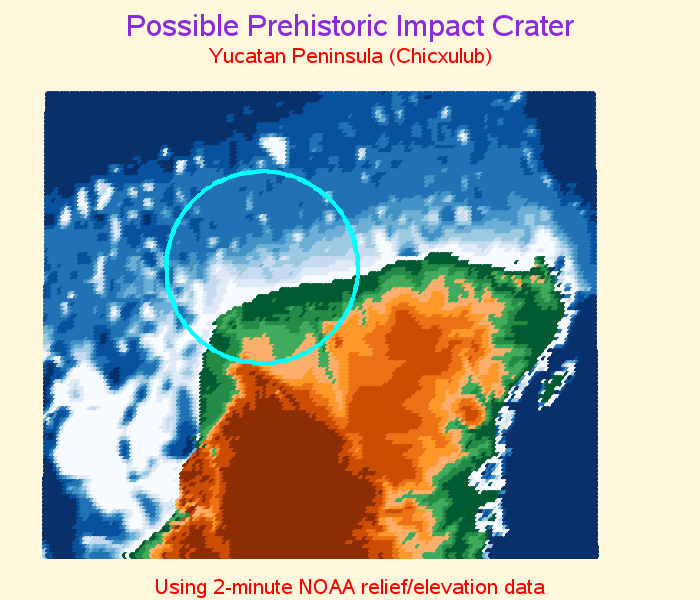
I guess a coding dinosaur is someone who uses an old/legacy computer language, or at least a language that isn't en vogue these days. Coding dinosaurs are still around (and probably will be for a while), whereas the real dinosaurs that lived millions of years ago are extinct. What caused

The little SAS program’s official name was Extract_Transform_Load_ 0314.sas. But, that name was much too formal, way too long, and did not roll off of the tongue very easily at all. So, everybody simply called her: ETL Pi. ETL Pi was conceived in a 2-hour project strategy meeting in conference

여러분은 어떻게 쇼핑하나요? 온라인 쇼핑몰, 모바일 앱, 소셜 미디어 등 디지털 기술의 발전과 함께 현대인의 쇼핑 방법은 점점 더 다양해지고 편리해지고 있습니다. 동시에 기업이 고객과 만나는 접점은 그 어느 때보다 많아졌는데요. 그만큼 기업의 디지털 마케팅 전략 또한 여러 기술 요소와 방법론이 혼용되는 하나의 큰 생태계로 발전을 거듭하고 있습니다. 그 생태계의 기반에 디지털
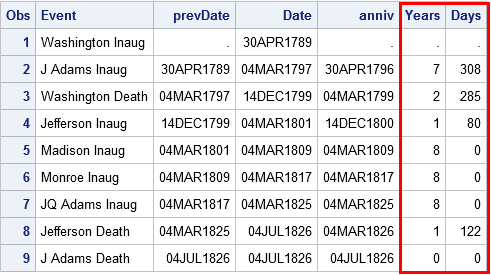
Last week I showed a timeline of living US presidents. The number of living presidents is constant during the time interval between inaugurations and deaths of presidents. The data was taken from a Wikipedia table (shown below) that shows the number of years and days between events. This article shows

The Foresight Practitioner Conference returns to Raleigh, NC (November 15-16), with a theme of "Recoupling Forecasting with Inventory Control and Supply Planning." This event is produced jointly by Foresight and the North Carolina State University Institute for Advanced Analytics, and deals with an important topic. Too often we consider forecasting
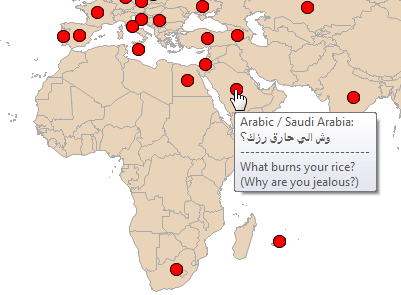
An idiom is a group of words established by usage as having a meaning not deducible from those of the individual words. For example, "don't cry over spilled milk," or "the cat is out of the bag." Idioms are fun to use, and fun to hear - don't you agree? And

Ivor Moan explains how SAS Data Management software can help you address GDPR requirements.

When a busy university analytics team is tasked with creating a new, interactive way to share data with dozens of different constituents, data visualization from SAS is the obvious answer. The University of Idaho’s office of Institutional Effectiveness and Accreditation is the source for comprehensive information, analyses and university statistics.
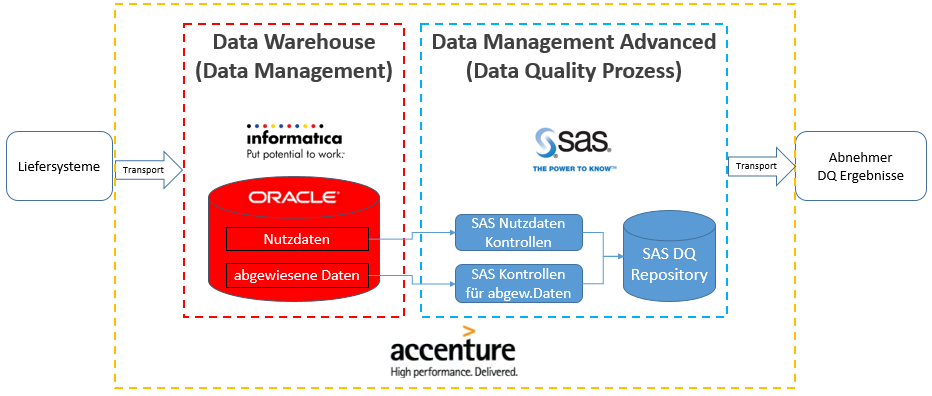
Die Erfahrung aus Lehman Brothers oder dem Zahlungsausfall bei griechischen Staatsanleihen hat gezeigt, dass die bisherigen bankinternen Strukturen zur Steuerung der Institute nicht mehr der Vielzahl an Marktänderungen gerecht werden. Im Januar 2013 veröffentlichte das Basel Committee on Banking Supervision die „Grundsätze für die effektive Aggregation von Risikodaten und die Risikoberichterstattung“
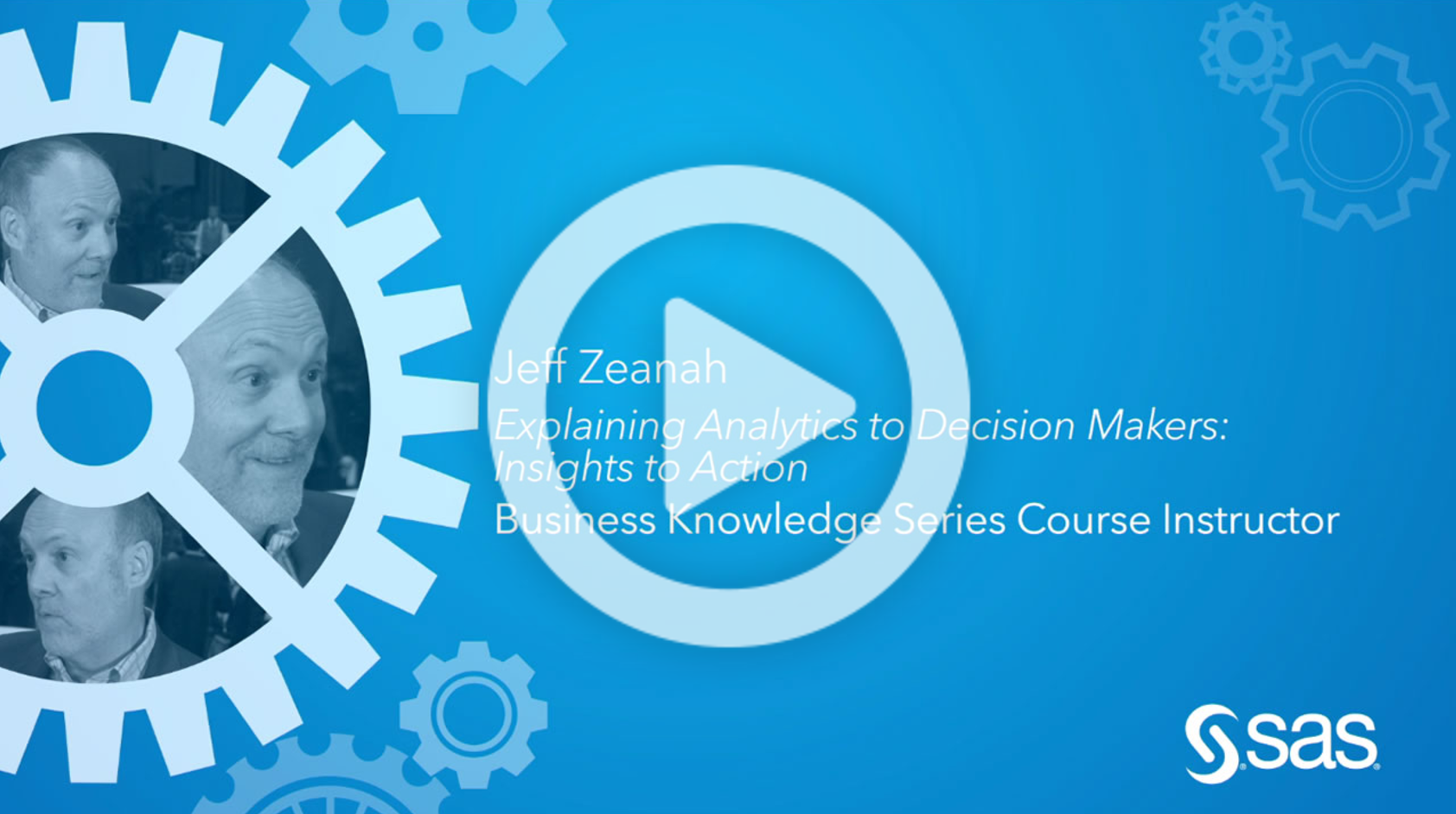
In the Tuscan hilltop village of Montepulciano, a tourist can visit the shop of Coppersmith Cesare Mazzetti. But Mazzetti is not just running his family’s traditional business, he’s demonstrating all the qualities of a historic craftsman. The visitor may see him work and have him show you photographs of some of

Jim Harris explains why data quality is such a fundamental aspect of master data management.
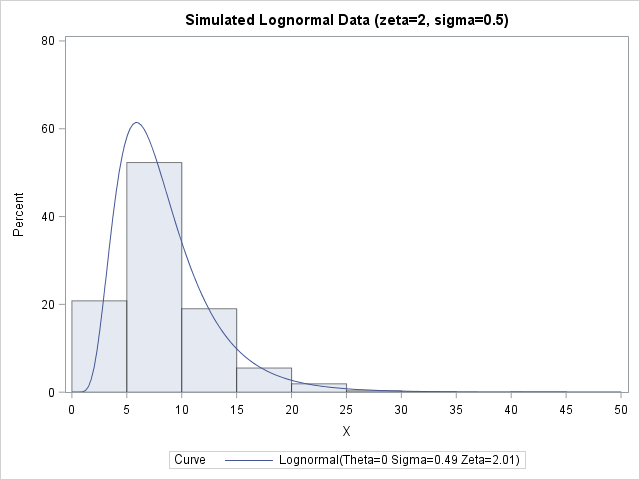
A SAS customer asked how to simulate data from a three-parameter lognormal distribution as specified in the PROC UNIVARIATE documentation. In particular, he wanted to incorporate a threshold parameter into the simulation. Simulating lognormal data is easy if you remember an important fact: if X is lognormally distributed, then Y=log(X)

Water is in the news more & more lately - people seem to either have too much, or too little, at any given time. Therefore being able to plot rivers and lakes on a map could be a very useful skill to add to your graphical bag of tricks. A few
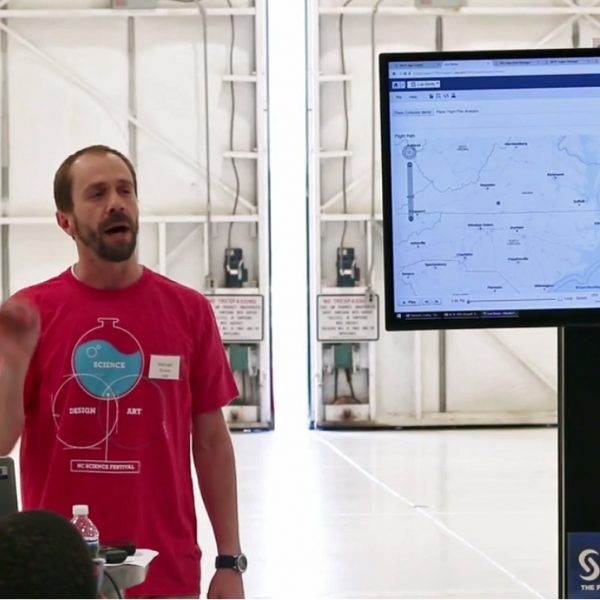
What do you get when you combine analytics, aviation and the Internet of Things? A learning experience that leaves everyone flying high! At Data on the Fly, 25 area high school students had the opportunity to learn how technology has changed – and continues to change – the aviation industry.

David Loshin discusses two common roadblocks in moving Hadoop from proof-of-concept to production.

Quick! What is the next term in the numerical sequence 1, 2, 1, 2, 3, 4, 5, 4, 3, 4, ...? If you said '3', then you must be an American history expert, because that sequence represents the number of living US presidents beginning with Washington's inauguration on 30APR1789 and
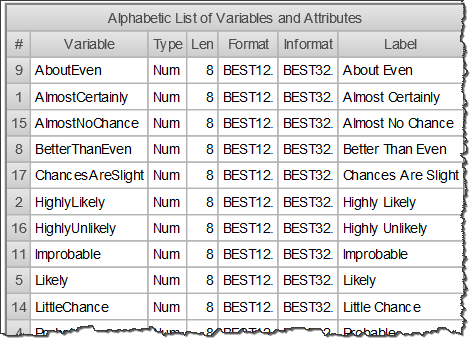
In his recent article Perceptions of probability, Rick Wicklin explores how vague statements about "likeliness" translate into probabilities that we can express numerically. It's a fun, informative post -- I recommend it! You'll "Almost Certainly" enjoy it. To prepare the article, Rick first had to download the source data from

Los gurús del mundo corporativo no dejan de repetir un veredicto: en los mercados digitales de nuestros días, quien analice los datos de su consumidor y de su entorno de negocios estará en posición de alcanzar el éxito. Creer en el planteamiento es fácil. Como lo han señalado algunos estudios,

Kim Kaluba describes how a customer data strategy can help you achieve an omnichannel vision.

Joyce Norris-Montanari poses the question: Is Hadoop/big data technology actually ready for MDM?
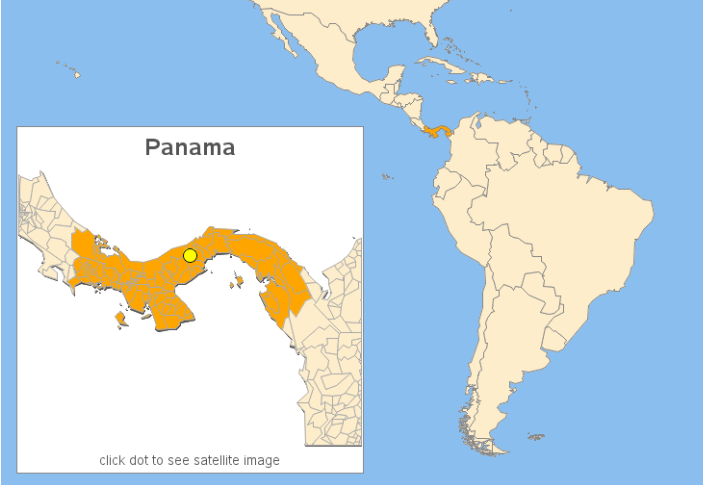
While attending SAS Global Forum, a user asked me about creating a map with a zoomed inset map. This is a topic many users might be interested in, so I decided to create an example and share it. But first, I had to decide which map to use. I thought

Ein großer Teil unseres Lebens besteht darin, möglichst intelligente Entscheidungen zu treffen. Eine echte Herausforderung angesichts der Fülle an Informationen und Daten, der wir heute ausgesetzt sind. Im Geschäftskontext heißt das: Nur wenn evidenzbasierte Entscheidungsprozesse tief in der Unternehmenskultur (unabhängig von Typ und Menge der Daten) verankert werden, lässt sich

In nahezu einem Jahr findet die neue EU-Datenschutz-Grundverordnung (DSGVO) Anwendung. Wer bisher dachte, das hat noch Zeit und wird nicht so heiß gegessen, wie es gekocht wird, der wurde von der Ankündigung des Bayerischen Landesamts für Datenschutzaufsicht überrascht: Bayern kündigt schon erste Kontrollbesuche an. „Abwarten und nichts tun ist mehr

Ich sitze im Büro und fingere durch den Papierberg aus meinem Postfach. Während ich ein Briefchen nach dem anderen ungelesen in den Mülleimer werfe, wundere ich mich, dass es so etwas wie Postfächer in einem Unternehmen, das Analyticssoftware herstellt, überhaupt noch gibt. Warum ist das so, frage ich mich belustigt.
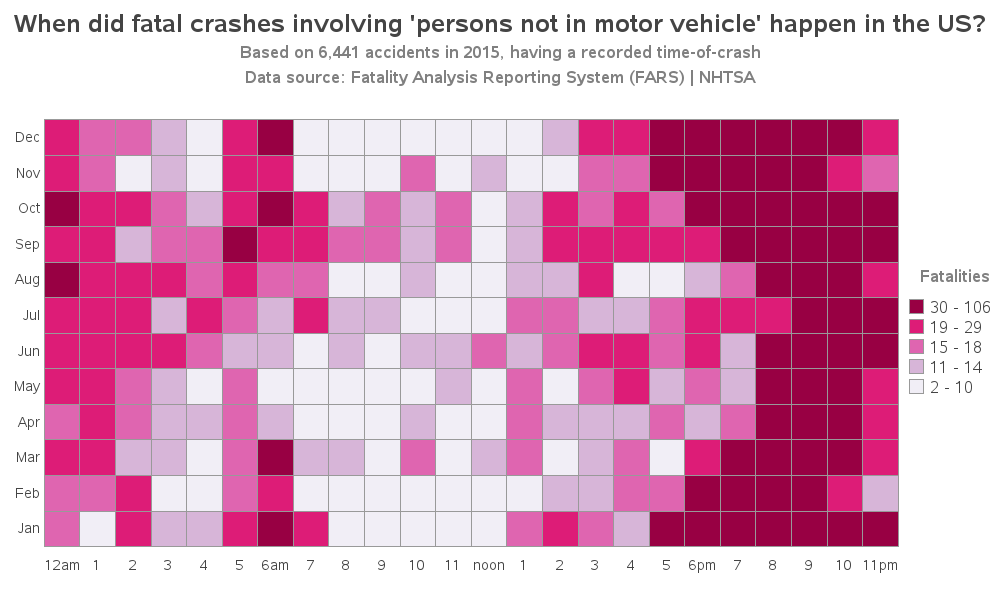
I recently saw an interesting data visualization on the flowingdata website, which analyzed & compared the causes of fatal crashes in the US, by month and time-of-day. At first I thought it was a really cool visualization, but after I studied it a while, I realized that I had misinterpreted

Digitalisierung braucht Analytics. Aber was braucht Analytics? Unter diesem Motto ist die mayato GmbH beim SAS Forum in Bonn am 29. Juni 2017 als Partner vertreten. Heute stellt Geschäftsführer Georg Heeren seine Firma in einem Gastbeitrag vor. „Kunden, die diesen Artikel gekauft haben, kauften auch: …“ oder „Kunden haben außerdem